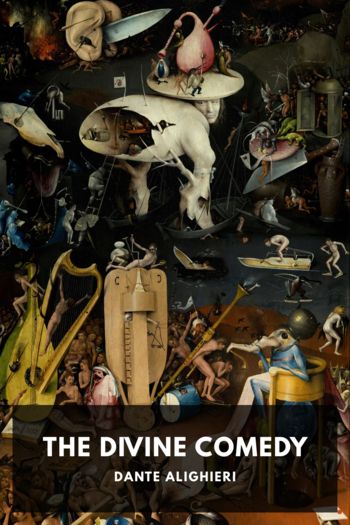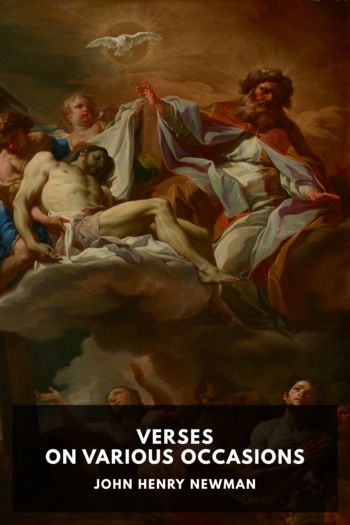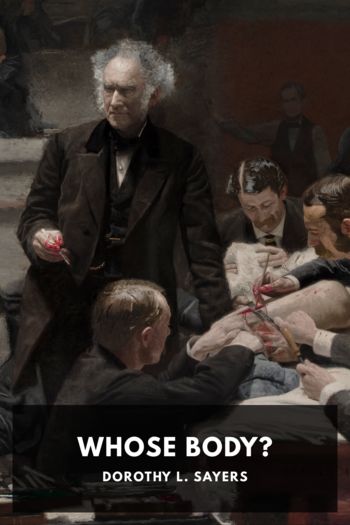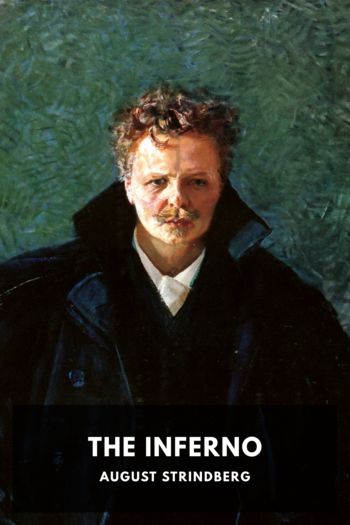The Divine Comedy, Dante Alighieri [best thriller novels of all time TXT] 📗

- Author: Dante Alighieri
Book online «The Divine Comedy, Dante Alighieri [best thriller novels of all time TXT] 📗». Author Dante Alighieri
↩
Shakespeare, Macbeth, IV 1:—
“The flighty purpose never is o’ertook,
Unless the deed go with it.”
↩
Suspended in Limbo; neither in pain nor in glory. ↩
Brighter than the star; than “that star which is brightest,” comments Boccaccio. Others say the Sun, and refer to Dante’s Canzone, beginning:—
“The star of beauty which doth measure time,
The lady seems, who has enamored me,
Placed in the heaven of Love.”
↩
Shakespeare, King Lear, V 3:—
“Her voice was ever soft,
Gentle, and low; an excellent thing in woman.”
↩
This passage will recall Minerva transmitting the message of Juno to Achilles, Iliad, II:—
“Go thou forthwith to the army of the Achaeans, and hesitate not; but restrain each man with thy persuasive words, nor suffer them, to drag to the sea their double-oared ships.”
↩
Beatrice Portinari, Dante’s first love, the inspiration of his song and in his mind the symbol of the Divine. He says of her in the Vita Nuova:—
“This most gentle lady, of whom there has been discourse in what precedes, reached such favor among the people, that when she passed along the way persons ran to see her, which gave me wonderful delight. And when she was near any one, such modesty took possession of his heart, that he did not dare to raise his eyes or to return her salutation; and to this, should any one doubt it, many, as having experienced it, could bear witness for me. She, crowned and clothed with humility, took her way, displaying no pride in that which she saw and heard. Many, when she had passed, said, ‘This is not a woman, rather is she one of the most beautiful angels of heaven.’ Others said, ‘She is a miracle. Blessed be the Lord who can perform such a marvel.’ I say, that she showed herself so gentle and so full of all beauties, that those who looked on her felt within themselves a pure and sweet delight, such as they could not tell in words.”
—C. E. Norton, The New Life, 51, 52↩
The heaven of the moon, which contains or encircles the earth. ↩
The ampler circles of Paradise. ↩
Divine Mercy. ↩
St. Lucia, emblem of enlightening Grace. ↩
Rachel, emblem of Divine Contemplation. See Paradiso XXXII 9. ↩
Beside that flood, where ocean has no vaunt; “That is,” says Boccaccio, Comento, “the sea cannot boast of being more impetuous or more dangerous than that.” ↩
This simile has been imitated by Chaucer, Spenser, and many more. Jeremy Taylor says:—
“So have I seen the sun kiss the frozen earth, which was bound up with the images of death, and the colder breath of the north; and then the waters break from their enclosures, and melt with joy, and run in useful channels; and the flies do rise again from their little graves in walls, and dance awhile in the air, to tell that there is joy within, and that the great mother of creatures will open the stock of her new refreshment, become useful to mankind, and sing praises to her Redeemer.”
Rossetti, Spirito Antipapale del Secolo di Dante, translated by Miss Ward, II 216, makes this political application of the lines:—
“The Florentines, called Sons of Flora, are compared to flowers; and Dante calls the two parties who divided the city white and black flowers, and himself white-flower—the name by which he was called by many. Now he makes use of a very abstruse comparison, to express how he became, from a Guelph or Black, a Ghibelline or White. He describes himself as a flower, first bent and closed by the night frosts, and then blanched or whitened by the sun (the symbol of reason), which opens its leaves; and what produces the effect of the sun on him is a speech of Virgil’s, persuading him to follow his guidance.”
↩
This canto begins with a repetition of sounds like the tolling of a funeral bell: dolente … dolore!
Ruskin, Modern Painters, III 215, speaking of the Inferno, says:—
“Milton’s effort, in all that he tells us of his Inferno, is to make it indefinite; Dante’s, to make it definite. Both, indeed, describe it as entered through gates; but, within the gate, all is wild and fenceless with Milton, having indeed its four rivers—the last vestige of the medieval tradition—but rivers which flow through a waste of mountain and moorland, and by ‘many a frozen, many a fiery Alp.’ But Dante’s Inferno is accurately separated into circles drawn with well-pointed compasses; mapped and properly surveyed in every direction, trenched in a thoroughly good style of engineering from depth to depth, and divided, in the ‘accurate middle’ (dritto mezzo) of its deepest abyss, into a concentric series of ten moats and embankments, like those about a castle, with bridges from each embankment to the next; precisely in the manner of those bridges over Hiddekel and Euphrates, which Mr. Macaulay thinks so innocently designed, apparently not aware that he is also laughing at Dante. These larger fosses are of rock, and the bridges also; but as he goes further into detail, Dante tells us of various minor fosses and embankments, in which he anxiously points out to us not only the formality, but the neatness and perfectness, of the stonework. For instance, in describing the river Phlegethon, he tells us that it was ‘paved with stone at the bottom, and at the sides, and over the edges of the sides,’ just as the water is at the baths of Bulicame; and for fear we should think this embankment at all larger than it really was, Dante adds, carefully, that it was made just like the embankments of Ghent





Comments (0)